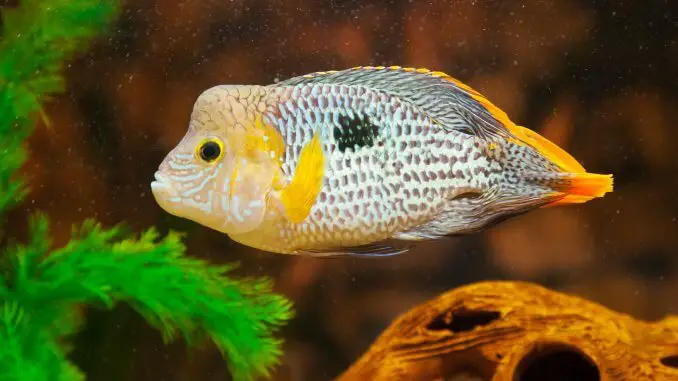
The green terror cichlid is a colorful freshwater fish that can bring interesting behaviors to your tank.
It is a valuable and rewarding fish to add to your aquarium as they are relatively easy to keep as long as you provide good water quality.
Despite this large fish is easy to care for, like many other cichlids, it can be aggressive so it is best suited to more experienced aquarists.
If you are thinking of adding Green Terrors to your aquarium, keep reading our complete guide to learn all you need to know.
TABLE OF CONTENTS
Green Terror Facts & Overview
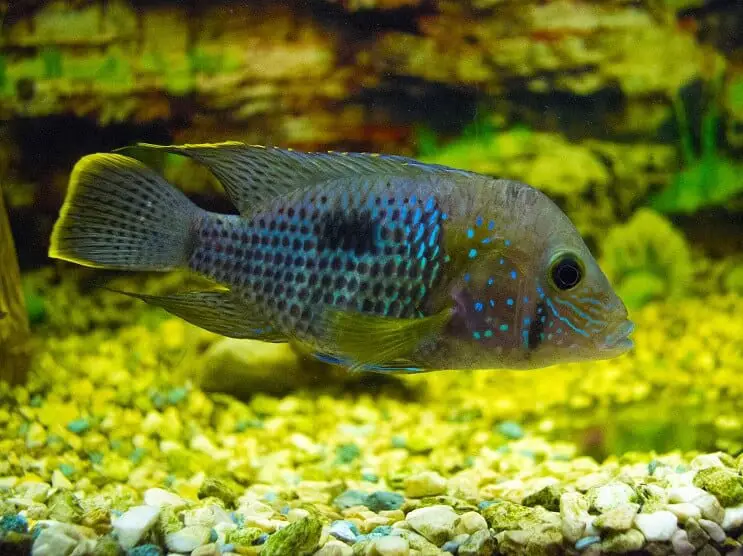
| Category | Rating |
| Care Level: | Intermediate |
| Temperament: | Aggressive |
| Color Form: | Green and blue |
| Lifespan: | 7-10 years |
| Size: | 12 inches |
| Diet: | Omnivore |
| Family: | Cichlidae |
| Minimum Tank Size: | 35 gallons for single, 75 gallons for a pair |
| Tank Set-Up: | Freshwater with hiding caves and a moderate current |
| Compatibility: | Similar size or larger fish |
Green Terror Cichlids belong to the largest order of fish (Perciformes) and are ray-finned, which means their fins are formed by a web of bony skin attached to their body like rays.
Their scientific name is Andinoacara rivulatus, and until recently they’ve been referred to as Aequidens rivulatus. They are also known under the names of the Gold or White Saum.
They were described for the first time by Günther in 1860.
It is a freshwater species inhabiting the tropical river basins of Peru and Ecuador in South America.
They are large fish that have bright metallic blue and green colors.
Because of its size, this fish can be extremely aggressive towards other fish especially during spawning seasons. With good care and good water quality, this fish could live in your aquarium for 7-10 years.
Typical Behavior
The Green Terror is a benthopelagic fish, which means that it will not stay within a certain depth range. Instead, it will freely swim across the tank and look for food from the surface to the bottom part of the tank.
This species of Cichlid is very aggressive and territorial – females are often more aggressive than males. The older the fish the more aggressive and territorial it becomes.
The reproductive stage can often improve their temperament; however, during spawning seasons they become particularly violent and aggressive.
Therefore, we suggest similar size fish as tankmates, smaller fish should be avoided because they are likely to be killed or eaten. Also, it would be better to keep this fish as a single specimen or as a mated pair.
This fish is omnivorous and a fanatic digger. You should keep this in mind when deciding on the best tank setup as rooted plants can often be pulled apart (more on this later).
Size and Appearance
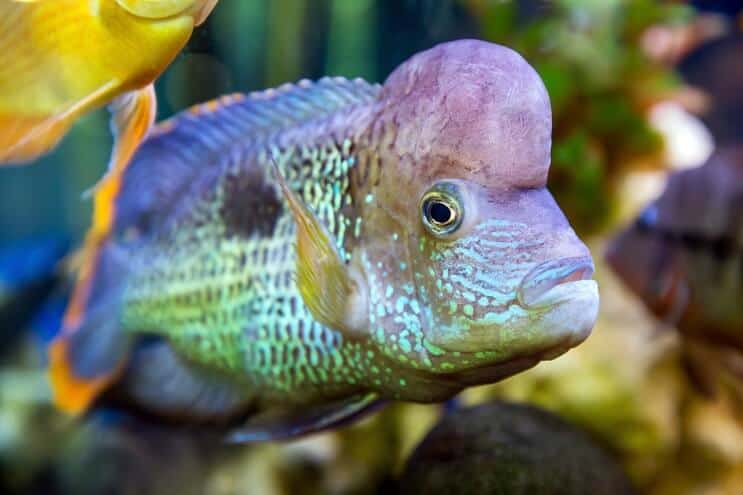
The Green Terror is a colorful and slender fish with pointed dorsal fins. In the wild, they usually grow larger in size (around 12″), and in aquariums they are slightly smaller (around 8″).
Despite its name, this fish is not only green.
The males have blue and green bright metallic colors with an orange line along the edges of the caudal and dorsal fins.
Females are significantly darker colored and smaller with a less pronounced striped orange pattern on the caudal and dorsal fins. In some cases, this stripe is absent. They also have other colors such as pink, red, or electric blue.
Colors change between juvenile and adult fish, with juveniles having more silvery blue shading than adults.
Some people have long considered its relative, the Andinoacara stalsbergi, the true Green Terror as it has a greener coloration.
One of the biggest differences between males and females is their head. An adult male develops a round hump on its head. In nature, these humps only appear during the breeding seasons, while in aquariums they can be permanent.
Habitat and Tank Conditions
The Green Terror is native to South America. It inhabits the coastal slopes of the Pacific Ocean from the Esmeralda River in Ecuador to the Thumbes River in Peru.
It lives in tropical freshwaters, in the calm streams and river basins away from the brackish waters of estuaries and river mouths.
The substrate of these bodies of water is usually sandy, and there are plenty of places for them to hide in the shade.
Tank Conditions
To mimic their natural environment, you’ll need a heater to keep the water temperature between 68-77°F with neutral pH (6.5-8.0).
Water hardness should be kept between 5-20 dGH.
Even though this species is not sensitive to light, it hides away from bright light. Therefore the tank should be kept moderately lit with moderate currents.
When you set up your tank, you can use large rocks, sand, and driftwood as substrate. However, large gravel should be avoided as it can cause digestive problems if eaten. Getting the correct tank setup is crucial to preventing unwanted behaviors.
Make sure to provide caves but also enough space for free swimming.
Rocks, wood, and plants can act as a natural barrier when in community tanks and help stop bad behavior toward other fish. Keep in mind that this fish likes to dig, and rooted plants will likely be pulled out and eaten. Therefore, floating plants such as Anubias or Java Fern would be a better solution as they can also provide shade.
As the Green Terror is rather sensitive to water parameter changes, an external filter should be used to help control water chemistry. Also, change at least 15-20% of the water tank every couple of weeks.
What Size Aquarium Do They Need?
Green Terror Cichlids need a 35-gallon aquarium if kept alone, or a minimum of 75 gallons for a pair.
The more space you can give to this fish the better, as with spacious tanks its aggressive temperament decreases.
How Many Can Be Kept Per Gallon?
You can keep one Cichlid for every 35 gallons.
Tank Mates
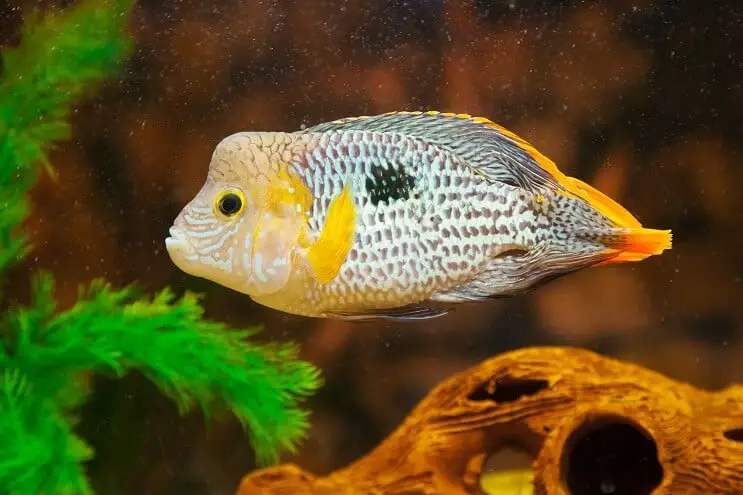
Green Terrors are best kept with fish of similar size and temperament. Bigger size fish are also a good choice.
The following fish make good tankmates:
- Other large Cichlids (such as Managuense Cichlids, Jack Dempseys, Fire Mouths, and Flowerhorns)
- Large Characins (such as Bleeding Heart Tetras)
- Large Loricariids (such as Plecs and medium to large catfish)
- Gars
- Silver Dollars
- Pacus
They shouldn’t be kept with smaller fish such as Corydoras and African Cichlids because these smaller fish will likely be killed. Also, Corydoras can be deadly as their spines can penetrate the Cichlid’s mouth and eventually cause its death.
Remember to not keep mated pairs in a community aquarium during spawning as they become extremely violent and aggressive.
Therefore, fish with similar temperaments will not be bullied so make the best tankmates. Remember that the bigger the community the bigger the aquarium should be.
Keeping Green Terror Cichlid Together
You should keep them as a single fish or as a mated pair. You can either purchase a formed pair or let them pair naturally. If you decide to pair them naturally make sure to separate the pairs before the spawning seasons start.
How to Care for the Green Terror Cichlid
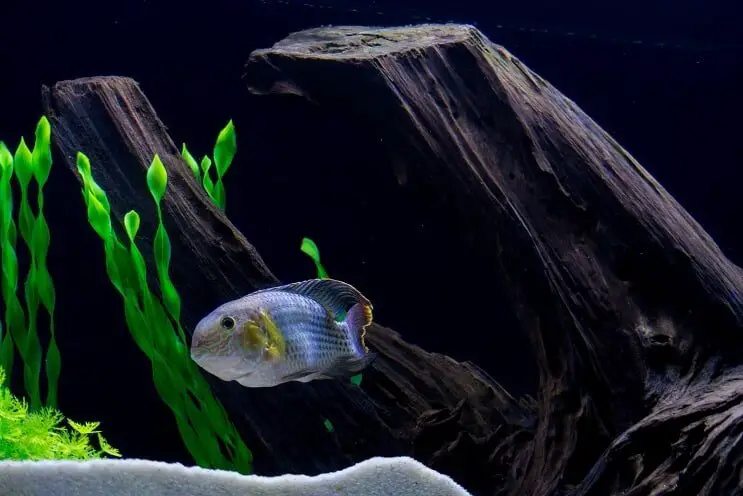
They are relatively easy to care for providing you can maintain the water conditions. They are very sensitive to deteriorating water quality, so nitrate and phosphorous levels must be kept in constant control. Hence, we advised the use of a bio-filter.
Green Terror Cichlids are susceptible to many infections. Parasitic, skin problems and HLLE can also arise in time.
These illnesses can be avoided if you keep a strict clean water regimen. For example, HLLE happens when water hardiness is kept too high for a long period of time.
They are predisposed to the lymphocystis disease, a viral disease very common in tropical fish, infecting the connective tissue cells of the fish. Stress is a key factor in the development of this disease with white granular lesions appearing on the skin and fins and occasionally on their mouth and gills.
It is always best to avoid the use of chemicals when dealing with Cichlids but instead try to keep water clean and ensure a healthy environment with good oxygenation.
Colors are a good indicator of fish and tank conditions. Typically, adult fish have bright colors and if they start to fade, there is likely something wrong.
What To Feed Them
Green Terrors tend to be carnivorous in the wild feeding on worms, small crustaceans, and insects.
They are not fussy eaters in home aquariums. They are omnivorous opportunistic fish and we would recommend feeding them a varied diet.
You can feed them pellets, frozen and live food. Keep in mind that live food is always better. Shrimps, earthworms, mussel meat, flakes, and pellets are all good fish feeds. You can also feed them with crickets, fish fillets, and tube worms.
Larger pellets, flakes, and live food are recommended for larger specimens. Occasionally, you can also feed them vegetables such as cooked peas and spinach.
It is important to not overfeed your Cichlids with high-protein food to avoid digestive problems.
Your fish should be fed twice per day, 3 times when juveniles.
Breeding
Breeding is relatively straightforward provided you have a compatible pair. You can either buy several young fish and let them pair off naturally or purchase a well establish pair from the start.
Keeping Green Terror with other fish during spawning is not an option as the males are very protective and will likely kill the other fish. In general, the male protects the site while the female cares for the eggs.
Males in the reproductive stage are easily recognizable as they have a round hump on their forehead and their colors will become brighter. These fish are open egg-layers with external fertilization – where the female will deposit the eggs first and then the male fertilize them in open waters.
Good water conditions should be enough for breeding; however, slightly acidic waters (pH 6.5), and warmer waters, 77-80°F, will help bring the couple into spawning.
The paired couple will start cleaning the chosen site within their territory before the breeding, ideally, this will be a flat rock or in its absence, they can clean the bottom of the tank from the sand and lay the eggs on the tank glass.
Usually, the fry will then be moved to sandpits until ready to swim. They are free swimmers after about 10 days.
The female will usually lay about 400 to 600 eggs. A semi-transparent yellowish color is a good indication of healthy fertilized eggs, which usually hatch in 3-4 days.
Green Terror Cichlids are very good parents and would be better to keep them with the eggs and the fry. You can feed the fry with micro-worm, brine shrimp (recommended), and powdered dry food.
It is important to not remove the hatchlings until brood care diminishes as the male could attempt to breed with the female again and turn on her.
Is the Green Terror Cichlid Suitable for your Aquarium?
Green Terror fish are a valuable addition to your tank if you already have some experience in fishkeeping.
This species will add some bright colors to your aquariums however there are several things that you should consider before buying them. Their behavior can be difficult to manage at times, they need a good feeding routine and a spacious tank.
Keeping the water clean is the most important thing for this fish. They are not demanding and will often follow you around curious about your movements waiting to be fed.
Do you keep this fish? Let us know in the comments section below…

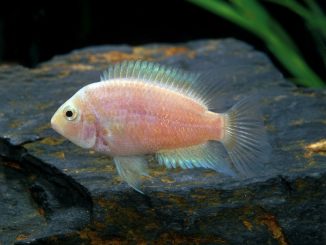
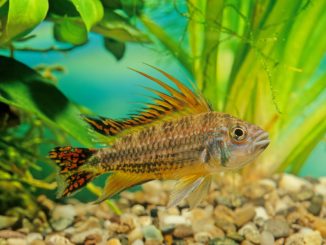
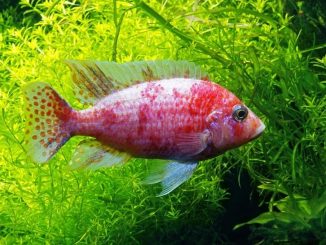
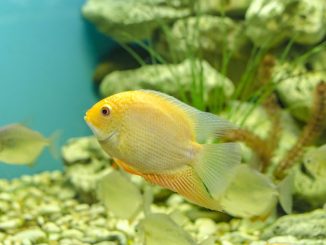
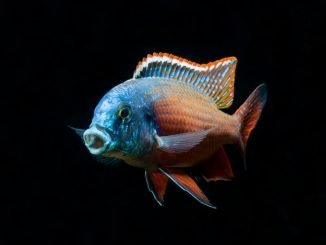
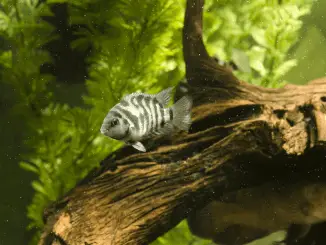
I have a male that is 9-10″ that has spawned several 10s, if not 100s of fry. His first mate died/was killed. Subsequently he has 2-3, going on 3-4, batches. I have a 75 gal tank and more than 2- more like 15 inside. They seemed to have adapted to a smaller area with time. Half were originally given to my neighbor and another batch of fry hatched- 100s in his tank. Can’t seem to get any takers. Can’t understand why.
I have a green terror he is my world i love his attitude
Well I just purchased a green terror and he’s getting along with my other fish, he’s a beautiful addition to the tank along with my other fish
I was sold two green terrors when I ordered 2 young blue Accra’s by mail. It was my misfortune that The company sold me these by mistake. The terrors however landed in seventh heaven withe everything just two their liking, 1 100 gal tank. They are both males and grew quickly to about 8 inches and very spectacular. I have 14 species of catfish from Corydoras to valuable spotted Plecs. Also 1 large black African catfish from Tanganyka and he sorts them output. I only feed algae as everyone else lives on greenery so they have to put up with that. I would give them away but there are not many takers in West Wales UK!